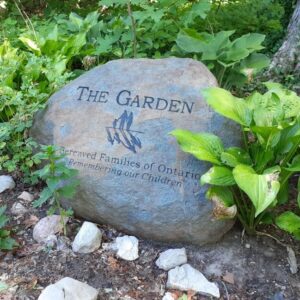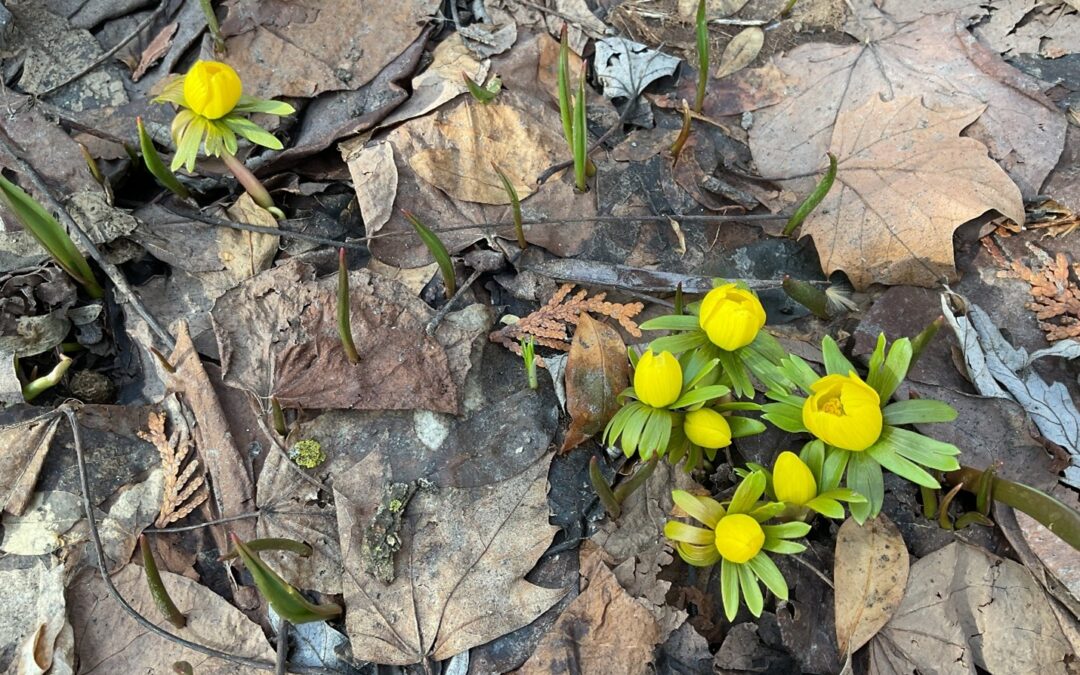Grief and Hope in the Spring
Written by Kylene Dube, BSW, MSW, RSW
Grief Counsellor, London, Ontario
[email protected]
While spring is generally welcomed for its warmth, transformation and renewal, it can be a bittersweet time for the bereaved. It may be difficult to appreciate the beauty surrounding us when our heart is filled with grief. Spring may spark seasonal memories of our loved one, both painful and comforting, and marks another milestone in our grief journey.
Despite our grief, spring remains a season of hope – it reminds us that there is light after the cold and darkness of the winter. In time, we may feel the warmth again.
Spring invites us to recognize we can hold both grief and beauty together. We may yearn for our loved one and still admire a vibrant spring garden. We may cry when alone and laugh with a friend moments later. It is the nature of healing to experience both deep sorrow and moments of joy.
Grief does not follow a timeline and healing is not seasonal. It is helpful and affirming to give ourselves permission to be wherever we are in our grief regardless of external markers. When our internal state does not fit with the season, it may be helpful to acknowledge the discrepancy to honour our reality and not put unreasonable pressure on ourselves. It is okay to feel sadness on a sunny day and lack energy even when others have ‘spring fever.’
Keeping in mind that healing is not seasonal and that everyone’s experience is unique, the following information is provided for consideration when navigating grief in the spring.
Spring Cleaning
Spring cleaning is a familiar concept, prompted by the renewed energy we typically experience with the change of season. Organizing and cleaning may bring about a feeling of satisfaction, recognizing it may feel difficult or impossible to start or finish a project when grief is weighing us down.
Depending on where you are in your grief journey, spring may be a good time to consider repurposing your loved one’s belongings. Possibilities include donating items to those in need, gifting them to friends and family, or finding a creative way to honour their importance.
Creative Expression
Creative expression can be healing so perhaps spring is time to consider writing a poem or story about your grief experience, or creating a piece of art, jewellery, or craft project incorporating your loved one’s possessions. It may be meaningful to create a quilt from their favorite t-shirts, a shadowbox to showcase their special treasures, or a memory box of keepsakes that represents our relationship. These are tangible ways to help us stay connected to our loved one and spend time with them as needed.
The Importance of Nature
Spirit signs are often associated with nature. Many believe that cardinals, bluebirds, jays, and red-tailed hawks are spirit visitors. Various cultures and faith traditions associate butterflies with the afterlife and rebirth. Encounters with birds and butterflies may therefore be a source of great comfort for the bereaved. In recognition of the strong connection bereaved persons often feel in relation to butterflies, BFO Southwest Region hosts a butterfly release event in late spring.
Regardless of whether you hold these beliefs, the healing power of nature is well documented. Exposure to green space promotes relaxation and reduces physiological signs of stress. Research has also shown that the more time people spend outside on a sunny spring day, the better their mood and cognitive functioning (Keller et al, 2005).
Daylight savings time extends the light available for us to be outdoors and the possibilities to engage in restorative activities are endless: walking, cycling, sitting, doing a craft, meditating, socializing, writing, listening to music, playing a sport, drawing, taking photographs, reading, etc. Whatever the activity, it is not a prescription for happiness although we may experience happy moments. The intent is to invite being present and experience something in addition to our grief.
Birding
As we welcome back the migratory birds, let them fill your senses. Open your windows and listen to their beautiful songs. We can invite them closer to better appreciate their colours and details by buying a feeder, bird bath or nesting box. Consider visiting a park with a pair of binoculars and you may be surprised at what you will find.

Great Horned Owlets at Gibbons Park, London, Ontario
Gardening
Many find solace in visiting the cemetery to be with a loved one. Others locate or create an outdoor place that lends itself to reflection and processing grief.
Planting and nurturing a memorial tree or plant is both a way to commemorate a loved one and engage in ongoing healing through caring for another living thing. The creation of a memory garden or butterfly garden can be a meaningful expression of love and remembrance. If outdoor gardening is not feasible or of interest, consider caring for indoor plants or buy a spring bouquet to bring nature indoors.
The Bereaved Families of Ontario Southwest Region Memory Garden offers a space to reflect and remember surrounded by nature. The Garden is located at Springbank Park in London and everyone is welcome.

These suggestions are not intended to minimize, disregard or eliminate our grief; they are ways to create additional space for it. It is tempting to stay indoors and cocoon despite the opportunities for hope and change that spring presents. Grief can become all-consuming and isolating if we withdraw from the outside world to protect ourselves from further pain. Healing requires us to be intentional about finding ways to let in some sunshine.
Seeking support from trusted friends, family, the Bereaved Families organization and helping professionals is encouraged. Taking even small, brief steps toward connection is nourishing and can help ease the pain of loss.

